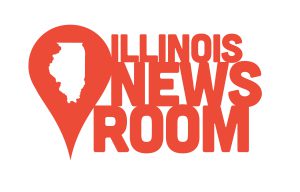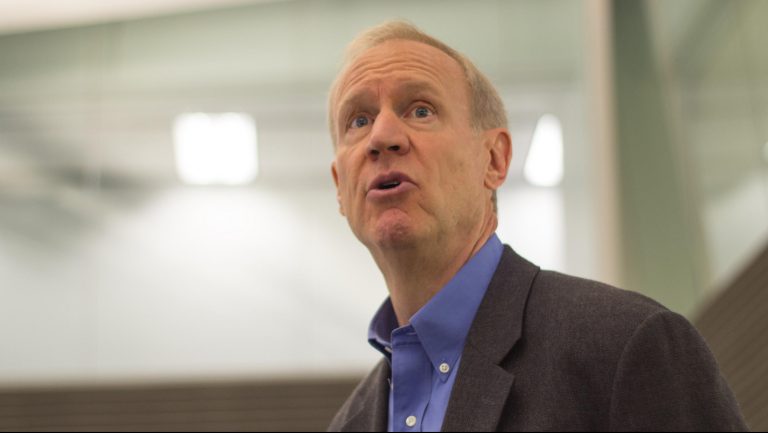Gov. Bruce Rauner is scheduled to unveil his fourth budget proposal Wednesday in a speech to the General Assembly.
Illinois lawmakers only enacted a budget for one of the three years he’s been in office.
That led to service cuts and some layoffs, but the state didn’t collapse. For most people, life went on as normal.
So we asked Statehouse reporter Brian Mackey: Does it really matter if Illinois has a budget?
The short answer is: Yes.
Without a budget, taxpayers don’t get a say in how Illinois spends money. But they still have to pay for it.
That was not always obvious. Back in summer 2015 when the budget stalemate began, most people thought state government would be paralyzed.
News report montage:
“Illinois is going to run out of money 26 hours from now.”
“The state will be without the authority to spend new money for at least a week.”
“No one can be paid until the Republican governor and the Democrat(ic) majority in the legislature reach a budget deal.”
Except, that’s not at all what happened.
Illinois government would go for more than two years without enacting a real budget.
But not having a budget is not the same thing as not spending money. And spend Illinois did.
In the arid language of state bond disclosure documents, it’s called “Spending in Absence of a Budget.”
Adding Up The Spending
There are four categories of this kind of spending:
The first is called debt service and statutory transfers — that includes paying off the state’s bond holders.
Altogether, that adds up to nearly $4.5 billion — all without a budget.
Next are continuing appropriations — automatic pension payments and funding for the courts and General Assembly. That’s another almost $3.5 billion — again, all without a budget.
Next are the things everyone did agree to spend money on — mainly schools — for another $11 billion dollars.
Finally, there was spending ordered by the courts. With state employees being told to show up to work, a trial judge said they had to be paid. And federal courts mandated spending on certain social services, adding up to $12.4 billion dollars — all without a budget.
When you add it all up — spending for Fiscal Year 2016 totaled $31 billion (not counting another $3 billion the state signed contracts to spend before it had the legal appropriations).
And that was just the first year of the stalemate. The second year, we did it again, and actually increased spending by another $three billion.
Over two years, Illinois spent or obligated $71 billion — all in the absence of a budget.
So not only did we not save money during the impasse — we went deeper in debt.
That’s because the stalemate began not long after an automatic tax cut, leaving a budget deficit of roughly $11 billion dollars over those two years.
The impasse was finally broken last summer, when more than a dozen Republicans turned on Rauner and worked with Democrats to pass a tax increase and a real budget for the first time in two years.
What’s At Stake In This Year’s Budget Address
Gov. Rauner has said his budget address will “propose a process to begin to roll back the tax hike that was passed over my veto list summer.”
He says Illinois doesn’t need all that money. But that is not a widely held view.
“Absolutely not,” says Steve Andersson, a Republican state representative from Geneva. He was one of the ringleaders of last summer’s revolt against the governor.
“We cut $3 billion out of the budget last year,” he says. “But to continually find more and more of that, it’s no longer cutting the fat, so to speak, now you’re into the bone and the marrow.”
Regardless of what the governor proposes in his budget address — or what legislators come up with on their own — the biggest question about the Illinois budget is not how much will be spent on what programs — it’s whether there will be a budget at all.
 Illinois Newsroom is a regional journalism collaborative (RJC) focused on expanding coverage of education, state politics, health, and the environment. The collaborative includes Illinois Public Media in Urbana, NPR Illinois in Springfield, WSIU in Carbondale, WVIK in the Quad Cities, Tri States Public Radio in Macomb, WTVP in Peoria, and Harvest Public Media. Funding comes from the stations and grants from the Corporation for Public Broadcasting (CPB) and McCormick Foundation.
Illinois Newsroom is a regional journalism collaborative (RJC) focused on expanding coverage of education, state politics, health, and the environment. The collaborative includes Illinois Public Media in Urbana, NPR Illinois in Springfield, WSIU in Carbondale, WVIK in the Quad Cities, Tri States Public Radio in Macomb, WTVP in Peoria, and Harvest Public Media. Funding comes from the stations and grants from the Corporation for Public Broadcasting (CPB) and McCormick Foundation.

